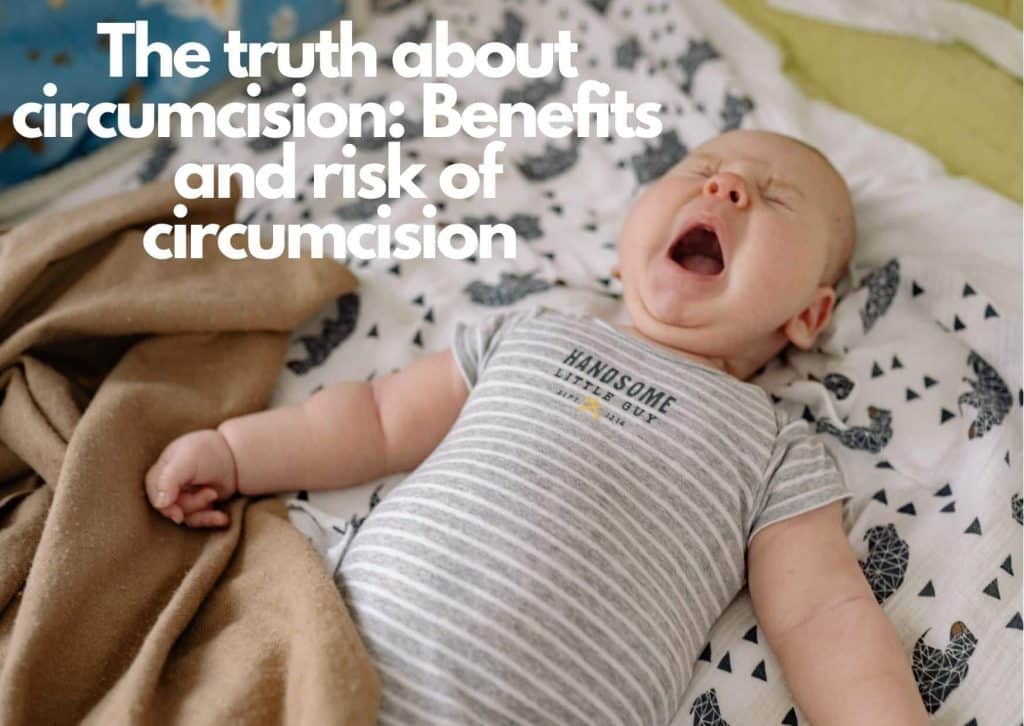Have you wondering to know more about circumcision, its benefit, risk, and why you should have your male child circumcised, continue reading this article.
What Is Circumcision and Why Do People Get It?
The foreskin, or tissue covering the penis’s head (glans), is surgically removed during circumcision. It’s a centuries-old ritual that has its roots in religious ceremonies. A growing number of parents circumcise their kids for religious or other reasons today.
When Is a Male Circumcised?

Photo credit: The Times of Israel
The first or second day after a baby is born is a common time to conduct a circumcision. It is customary for Jewish men to undergo circumcision on the eighth day after conception. Age and gender make the surgery more difficult, as well as more dangerous.
Follow-Up after Circumcision
The healing time for circumcision is usually between five and seven days.
In the case of an infant, you should only use soap and water to clean the penis until it heals. Diaper wipes should not be used. Every time you change a diaper, add a small amount of petroleum jelly to the region and loosely rewrap the gauze bandage. When changing diapers, only loosely fasten them. You may notice some redness or bruising in the area, as well as a small amount of yellow fluid in the diaper.
Adult males and older boys who have been circumcised should take it easy for the first two or three days. For the most part, they can return to school or employment after that. In the first 24 hours after the treatment, they should consume a lot of water and other clear drinks. It’s also recommended that you apply 10-20 minutes of continuous ice to the affected area on the first day. In order to maintain the dressing in place until the doctor instructs them otherwise, they should wear loose, comfortable underwear.
The Advantages of Having Your Baby Circumcised
Circumcision has been linked to a number of health advantages, including:
- Infections in the urine are less likely to occur.
- Men may have a lower chance of contracting some sexually transmitted diseases.
- Balanitis (gland inflammation) and balanoposthitis prevention (inflammation of the glans and foreskin)
- Reduction in the prevalence of phimosis and paraphimosis (the inability to return the foreskin to its original location)
The dangers of circumcision
The hazards of circumcision are the same as those of any other surgical treatment. However, the likelihood of this happening is quite low. Circumcision-related issues include:
- Pain
- Infection and bleeding at the circumcision
- Itching and burning
- Meatitis is more likely to occur (inflammation of the opening of the penis)
- Penis damage potential
After Circumcision, What next?
Your doctor will go over the specifics of how to care for your newly circumcised penis. In order to:
- At each diaper change, apply Vaseline to the baby’s bottom.
- Your doctor may prescribe that you breastfeed frequently or take medication for your baby if you are experiencing pain.
- Use a mild soap and water to clean the wound while it heals.
- Call your doctor if the penis isn’t healing properly or if you have any questions.
Is Circumcision Compulsory
Circumcision is not recommended for everyone because not all religions accept this. Apart from religion, there are other reasons why some people don’t get circumcised.
If your infant has any of the following conditions, your doctor may recommend delaying or avoiding circumcision altogether:
- Has a very bad health condition.
- He may require surgery to address physical issues with his penis. (Surgeons may require foreskin in some circumstances.)
- If the baby was born prematurely
After a circumcision, what happens?
The process begins with the removal of the foreskin, followed by the application of ointment and the subsequent wrapping of the penis in gauze.
How long does it take to get circumcised?
About 20 minutes are needed to complete the full process. A bris is usually quicker.
Is circumcision painful?
Circumcision, like any other surgical procedure, can be uncomfortable for some time following the procedure. Painkillers and anesthetics, on the other hand, can help alleviate discomfort. These can be useful both during and after the treatment.
How Do We Take Care of a Penis That Hasn’t Been Circumcised?
It’s important to keep an uncircumcised penis clean, just like a circumcised one. You don’t even need to use cotton swabs, astringent, or any other special infant bath items; simply warm water every time.
First, avoid cleaning beneath the foreskin by pulling it back. This will happen over time and will allow you to effortlessly draw the foreskin toward your belly. The foreskin can be retracted by most boys by the time they reach puberty, though it happens at different periods for different guys.
If you have a kid, show him how to wash his foreskin properly as he grows older by having him gently draw it back from his glans, then have him rinse the glans with warm water before putting the foreskin back over the head of his penis.
